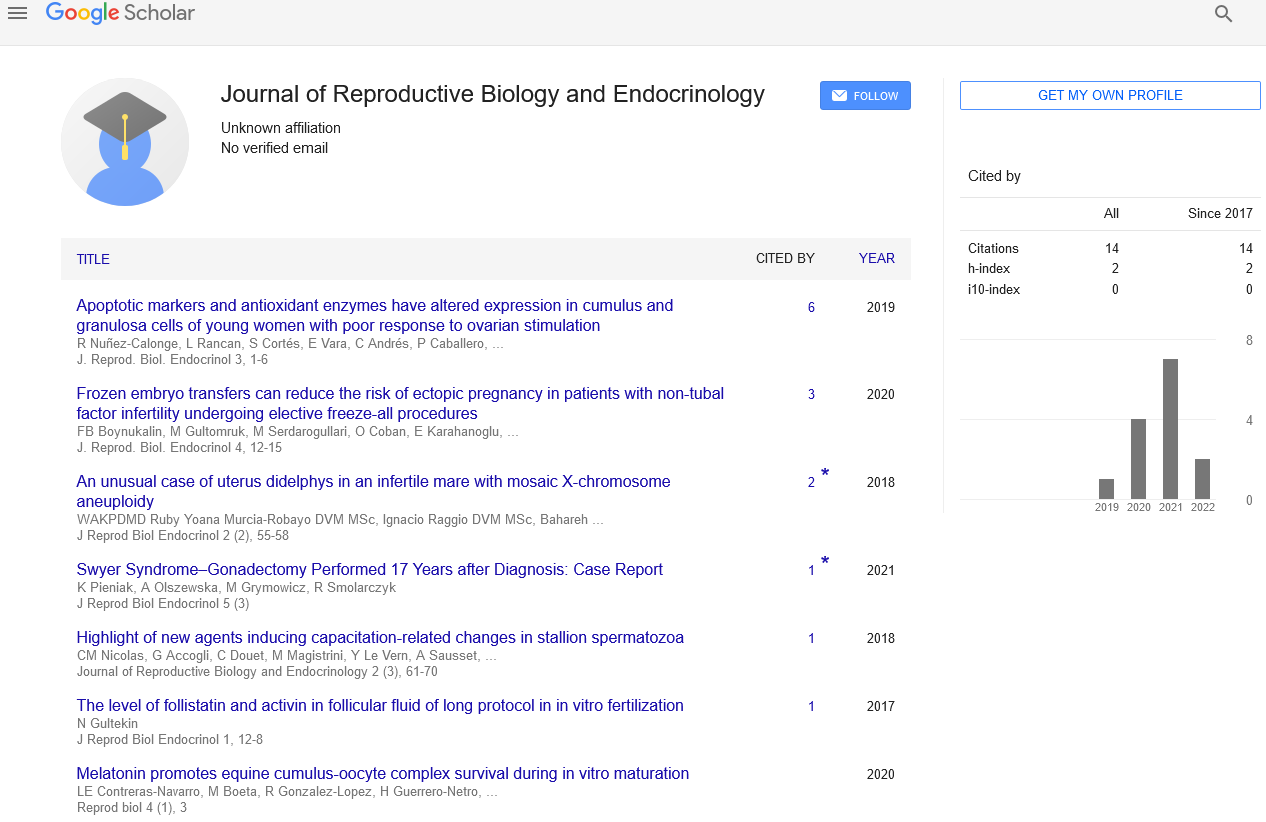Chronic pelvic pain effect on old woman’s
Received: 05-Jul-2022, Manuscript No. puljrbe-22-5824; Editor assigned: 07-Jul-2022, Pre QC No. puljrbe-22-5824 (PQ); Accepted Date: Jul 26, 2022; Reviewed: 21-Jul-2022 QC No. puljrbe-22-5824 (Q); Revised: 22-Jul-2022, Manuscript No. puljrbe-22-5824 (R); Published: 28-Jul-2022, DOI: DOI:10.37532/PULBECR .2022.6(4).4-5
Citation: Williams A. Chronic pelvic pain effect on old womanâ??s. J. reprod. biol. endocrinol. 2022;6(4):4-5.
This open-access article is distributed under the terms of the Creative Commons Attribution Non-Commercial License (CC BY-NC) (http://creativecommons.org/licenses/by-nc/4.0/), which permits reuse, distribution and reproduction of the article, provided that the original work is properly cited and the reuse is restricted to noncommercial purposes. For commercial reuse, contact reprints@pulsus.com
Abstract
Women frequently have Chronic Pelvic Pain (CPP), which has general practise consultation rates comparable to those for migraine and asthma. Population-based studies from the US and the UK, along with information from hospital settings in the UK, show that CPP has a significant impact on health-related quality of life. In this review, we will focus on the available Randomised Controlled Trials (RCTs) to analyse the most recent research on the origin and treatment of CPP. Since CPP is a diverse condition, the exact cause is frequently unknown. There are connections to specific clinical processes, however it is difficult to interpret because the data from numerous research are not comparable. Up to 60% of women with CPP in the community do not have a precise diagnosis, and up to 20% have not had any kind of investigation. Irritable bowel syndrome is the factor most frequently linked to CPP in the general population, however when laparoscopy is used in a tertiary context, endometriosis, adhesions, and "no pathology" are all linked to CPP in descending order of frequency.
Key Words
Chronic pelvic pain; Epidemiology; Prevalence; Incidence; Risk factor
Introduction
The adoption of an objective, understandable, and generally accepted definition for the condition of interest is particularly crucial in epidemiological investigations because it permits the extraction of exact results that are acceptable for comparison with studies in other populations. Unfortunately, it doesn't seem as though there is an international consensus on the definition of CPP just yet.
The location and duration of the pain are the sole factors taken into account in the most widely accepted (and objective) definition of CPP: recurring or continuous pain in the lower abdominal area that has lasted for at least six months. Those who only feel pelvic pain during menstruation (dysmenorrhoea) or during sexual activity are typically excluded, as well as those whose pelvic pain is linked to pregnancy or cancer (dyspareunia).
Endometriosis (33%), adhesions (24%), and "no pathology" (35%), in increasing order of occurrence, are typical laparoscopic findings in women who have been tested for CPP. 5 The population-based studies mentioned above show patterns of symptomatology and received diagnosis that point to a broad pattern of pathophysiology, with urinary (31%) and digestive (37%) systems being more frequently reported than specifically gynaecological (20%) issues. The variety of symptoms and diagnoses that these patients reported are undoubtedly a reflection of the population under study, the narrow diagnostic window of conventional clinical techniques, and the various methods used to manage the condition in the community as opposed to a hospital or tertiary facility. The location or intensity of discomfort may not be related to pathology like adhesions or endometriosis. The intricate neurophysiology of visceral sensation, or sensation originating from internal organs like the uterus and ovaries, may help to partially explain this disparity. Because of alterations in the way the brain and spinal cord process inputs, normal physical sensations might be experienced as painful. As a result, a sizable portion of women with CPP will not have a firm diagnosis. Irritable bowel syndrome, which is frequently present but overlooked without a proper history being taken in women brought to gynaecologists for evaluation, has been one of the explanations for CPP without pathology.
Conclusion
Chronic Pelvic Pain (CPPorigin )'s is still mostly unknown. Given the wide range of study populations and study types described thus far, the factors linked to CPP appear to be numerous and diverse. Endometriosis, adhesions, pelvic inflammatory disease, muscle and nerve abnormalities, and psychological problems are a few examples of the organic pathology that has been linked to CPP. But according to community research, up to 20% of women with CPP have never undergone any investigations, and more than half of them have not yet received a diagnosis. Irritable bowel syndrome was the most often identified condition in individuals who had it.





